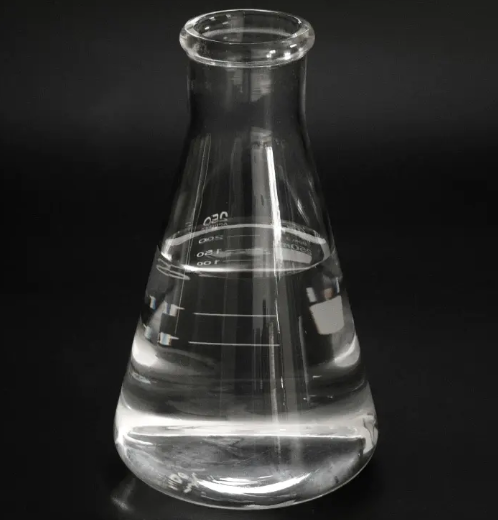Learn about recent related news.

What factors are related to the dispersion of Low Sodium Type Colloidal Silica/Silica Sol?
Low Sodium Type Colloidal Silica/Silica Sol has been widely used in many fields such as coatings, food, ceramics and medicine due to its good dispersion and stability. Dispersion is an important characteristic for the uniform distribution of particles in a colloidal solution, which directly affects the performance and application effects of the product.
1. Particle size
Particle size is an important factor affecting colloidal dispersion. The particle size of low-sodium colloidal silica is usually between 5 and 50 nanometers. The smaller the particle size, the larger the surface area, resulting in an increase in the interaction force between particles. , thereby improving its dispersion. Silica with small particle size can be better dispersed in liquids and form stable colloidal solutions. However, if the particle size is too small, it may lead to agglomeration between particles, so the particle size needs to be controlled through appropriate processes during the preparation process.
2. pH value
The pH of the colloid has a significant impact on dispersion. The pH value changes the charge on the surface of colloidal particles, thereby affecting the mutual repulsion and cohesion between particles. Normally, the pH value of low-sodium colloidal silica should be controlled between 6 and 9. Within this range, the charges on the surface of the colloidal particles are evenly distributed, which enhances the electrostatic repulsion between particles and helps improve dispersion. If the pH value is too low or too high, particles may aggregate due to neutralization, resulting in reduced dispersibility.
3. Ionic strength
The ionic strength in the solution also affects the dispersion of colloids. High ionic strength may cause an electrolyte shielding effect and weaken the electrostatic repulsion between particles, making it easier for particles to aggregate. When preparing low-sodium colloidal silica, the ion concentration of the solution needs to be controlled to maintain appropriate dispersion. The use of deionized water or low ionic strength solvents can effectively improve the dispersion of colloids.
4. Temperature
Temperature is an important physical factor that affects the dispersion of colloids. Higher temperatures can increase the speed of molecular movement and reduce agglomeration between particles. When the temperature rises, the kinetic energy of the particles increases and they can overcome a certain gravity and remain dispersed. However, too high a temperature may lead to a decrease in the stability of the colloid, so preparation and storage should be within a reasonable temperature range.
5. Additives
The use of additives has an important impact on dispersion. Appropriate surfactants and stabilizers can improve the dispersion of low-sodium colloidal silica. Surfactants can reduce the surface tension between particles and increase the wettability of particles, thereby improving the dispersion effect. In addition, certain polymers can also be used as protective agents to coat the surface of particles to prevent aggregation between particles and improve stability.
6. Mixing and Stirring
During the preparation process, the method and speed of mixing and stirring also affect the dispersion. Uniform stirring can effectively reduce aggregation between particles and maintain the stability of the colloid. Stirring too fast may cause bubbles to form, which will affect dispersion. Therefore, it is necessary to choose the appropriate stirring method according to the specific situation.
The dispersion of low-sodium colloidal silica is affected by many factors, including particle size, pH value, ionic strength, temperature, additives, and mixing and stirring methods. By rationally controlling these factors, the dispersion and stability of the colloid can be effectively improved, thereby improving its performance in various applications. Understanding these influencing factors is crucial to optimizing the preparation process and application effects of low-sodium colloidal silica.
Related Products
-
Ammoniacal Colloidal silica/silica sol is a low density, colloidal silica used as a filler in coatin...
-
Colloidal silica/Silica Sol with Large Particle Size
Colloidal silica/Silica sol is a kind of colloid which is formed by nm-grade particles SiO2, dispers... -
Low Sodium Type Colloidal Silica/Silica Sol
Colloidal silica/Silica sol is a kind of colloid which is formed by nm-grade particles SiO2, dispers... -
Potassium Type Series Colloidal Silica/Silica Sol
Colloidal silica/Silica sol is a kind of colloid which is formed by nm-grade particles SiO2, dispers... -
Sodium Colloidal Silica/Silica Sol
Sodium Colloidal Silica/Silica Sol Colloidal silica/Silica sol is a kind of colloid which is formed ... -
Acid Series Colloidal Silica/Silica Sol
Acidic silica sol is a colloidal solution formed by uniform diffusion of silica particles in water. ... -
Colloidal Silica/Silica Sol With Small Particle Size
Colloidal silica/Silica sol is a kind of colloid which is formed by nm-grade particles SiO2, dispers... -
Neutral Colloidal Silica/Silica Sol
Colloidal silica/Silica sol is a kind of colloid which is formed by nm-grade particles SiO2, dispers...


 中文简体
中文简体